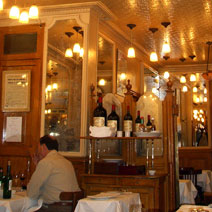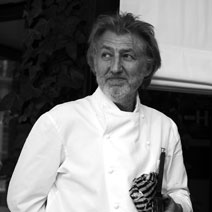The third generation of the Dumonet family now run one of the last and best of Paris's old-fashioned bistros. A charming Left Bank address with its amber-colored walls, elaborate moldings, serious waiters, and a sophisticated crowd. Go there for an anthology of traditional French bistro dishes, many of which are served in half portions, including terrine de foie gras; lamb's lettuce, potato and black truffle salad; tournedos Rossini; andouillette; boeuf bourguignon; and Grand Marnier soufflé.
117 rue du Cherche Midi, 6th; 01-45-48-52-40




 Pinterest
Pinterest


